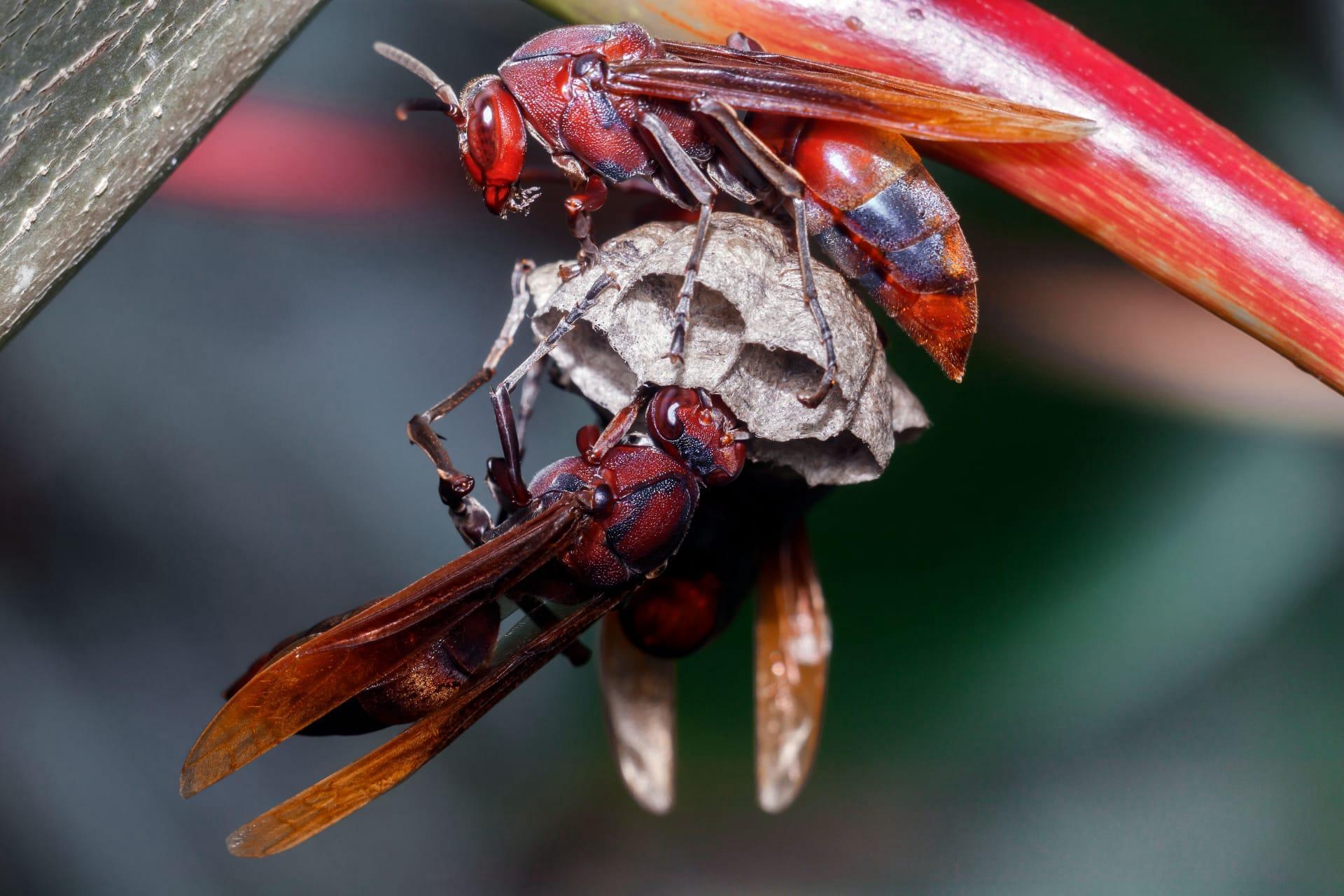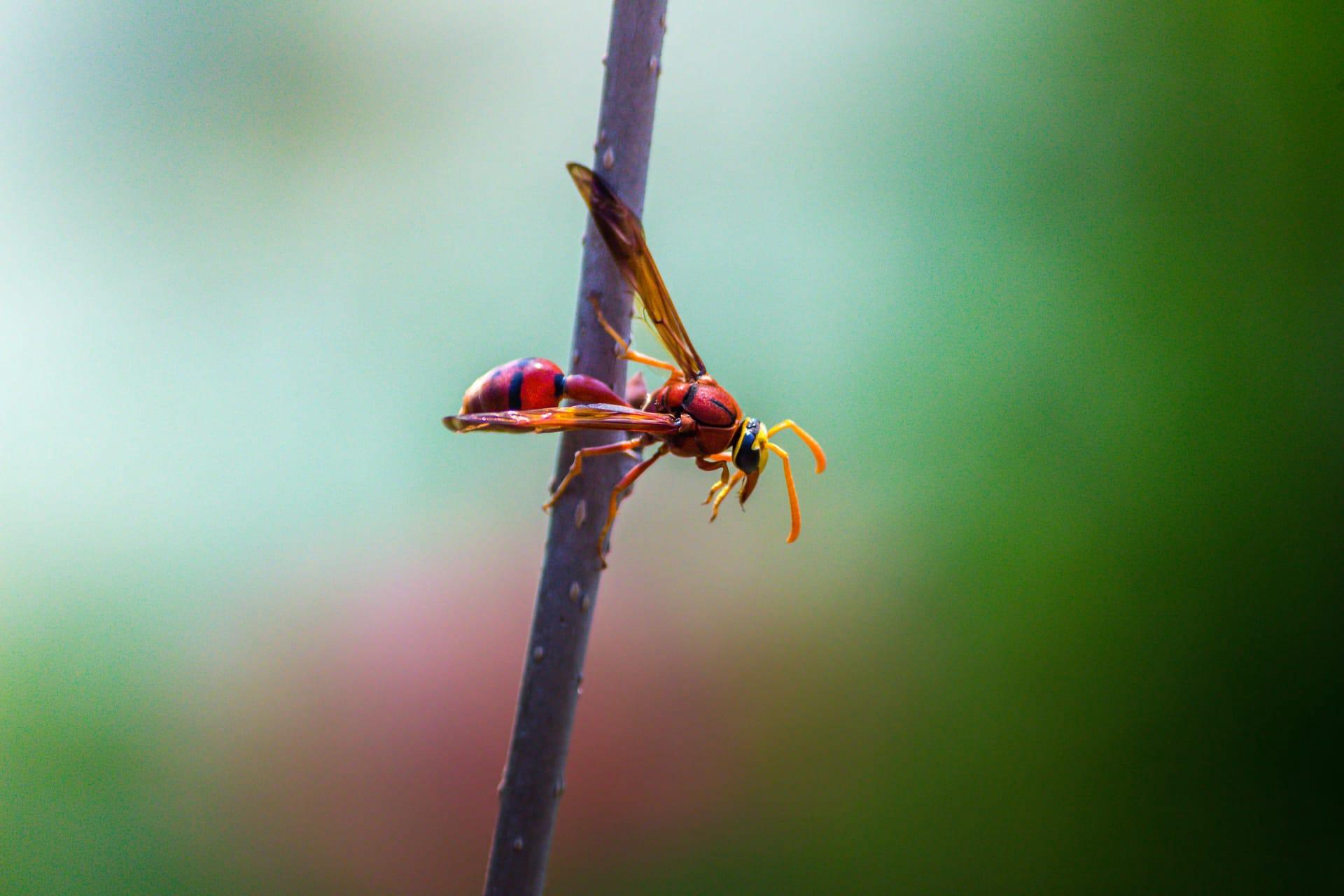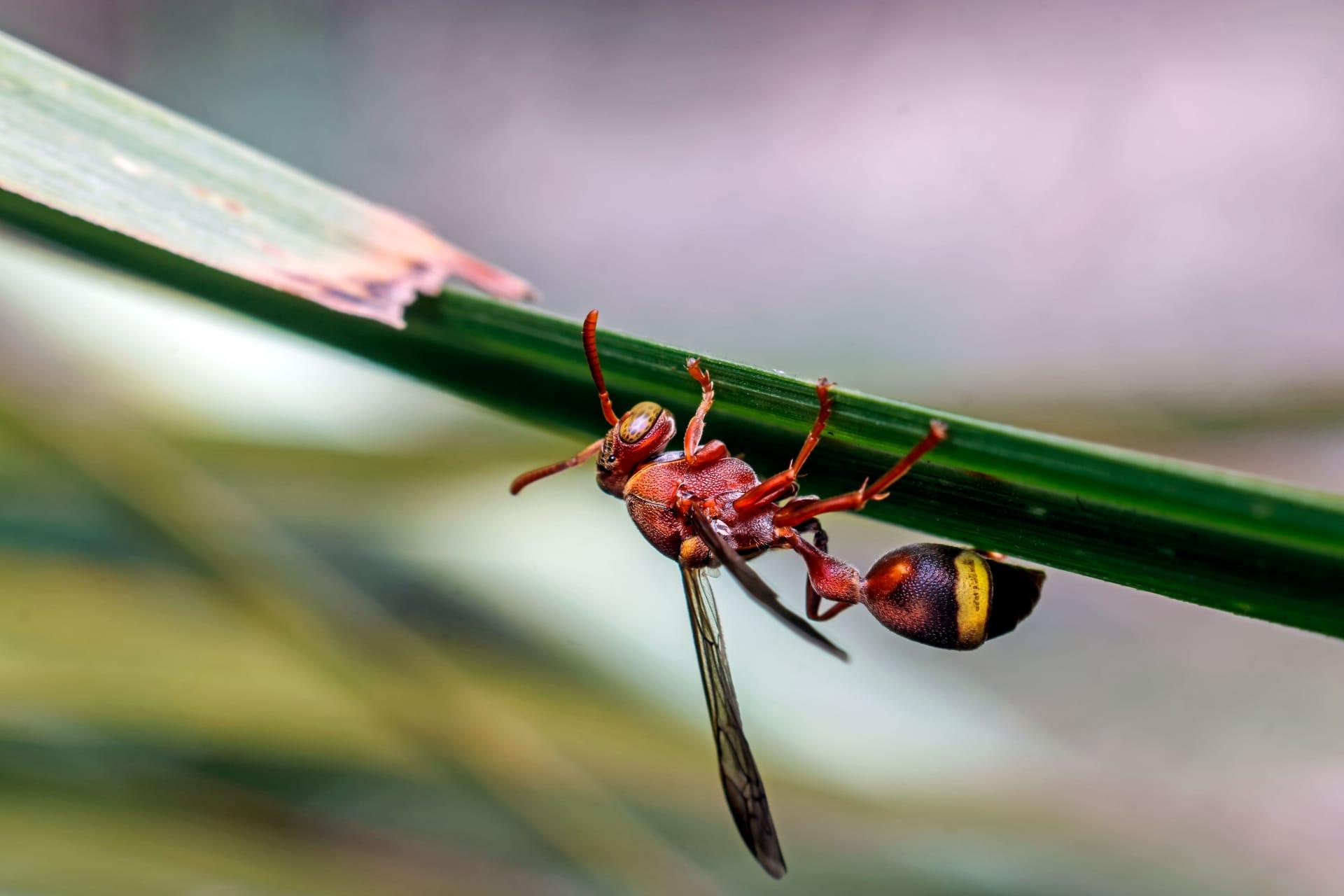Red Wasp
- Home /
- Mini Encyclopedia /
- Animal /
- Red Wasp
1
The Red Wasp, scientifically known as Polistes carolina, belongs to the family Vespidae, under the order Hymenoptera. This order also includes bees and ants. The genus Polistes is notable for its paper wasps, and the Red Wasp is a prominent member of this group. Characterized by their distinctive reddish-brown color with black wings, these wasps have slender bodies measuring about 1 inch in length.
Red Wasps are primarily found in the southeastern United States, extending as far west as Texas and north to areas of the Midwest. They thrive in various environments, including urban areas, gardens, and woodlands. These wasps prefer warm climates and are particularly active during the warmer months of the year. They are often seen around human dwellings and are known for building their nests in sheltered areas like eaves, attics, or unused machinery.

2
Question: Do Red Wasps produce honey like bees?
Answer: Unlike bees, Red Wasps do not produce honey. While they share some similarities with bees, such as being part of the Hymenoptera order and living in social colonies, their diet and behavior are quite different. Red Wasps primarily feed on nectar, insects, and caterpillars. They play a role in pollination, but their contribution is significantly less compared to bees. Additionally, the structure of their nests, made from chewed wood pulp and saliva, is quite different from the wax-based hives of bees.

3
Red Wasps have developed several strategies for survival. One key aspect is their social structure. They live in colonies dominated by a queen, who is responsible for laying eggs. The rest of the colony consists of workers who gather food, maintain the nest, and protect the colony. This social structure enhances their survival by dividing tasks and ensuring efficient colony management.
Another survival strategy is their aggressive defense mechanism. Red Wasps are known for their painful sting, which they use to ward off predators and protect their nests. They can sting multiple times, unlike honeybees. Their sting contains a venom that can cause pain and swelling in humans and can be particularly dangerous to those allergic to wasp stings.

4
In the ecosystem, Red Wasps play a dual role as both predators and prey. They contribute to controlling the population of other insects, which they hunt to feed their larvae. This predatory behavior helps maintain a balance in the ecosystem, particularly in controlling pests that can damage crops and garden plants.
Red Wasps also serve as a food source for several bird species, spiders, and other predators. This positions them as an integral part of the food chain, contributing to the biodiversity and health of their environment. Additionally, their role in pollination, though limited compared to bees, is still vital in supporting the reproduction of various plant species.

5
Film: One notable documentary focusing on Red Wasps is "Wings of the Red Wasp," produced in the United States in 2018. This documentary delves into the life cycle, behavior, and ecological role of Red Wasps, offering viewers an intimate look at these often-misunderstood insects through macro-photography and expert interviews.
Book: "The World of Wasps" by Dr. Emily Stone, published in the UK in 2020, provides a comprehensive overview of wasp species, including the Red Wasp. Stone's work is praised for its detailed exploration of wasp biology, behavior, and the ecological significance of these insects.
Book: In "Insects of the South: A Field Guide," authored by Michael Jones and released in the USA in 2019, there is a dedicated section on Red Wasps. This book offers insights into the habitat, identification, and role of Red Wasps in southern ecosystems, making it a valuable resource for enthusiasts and researchers alike.